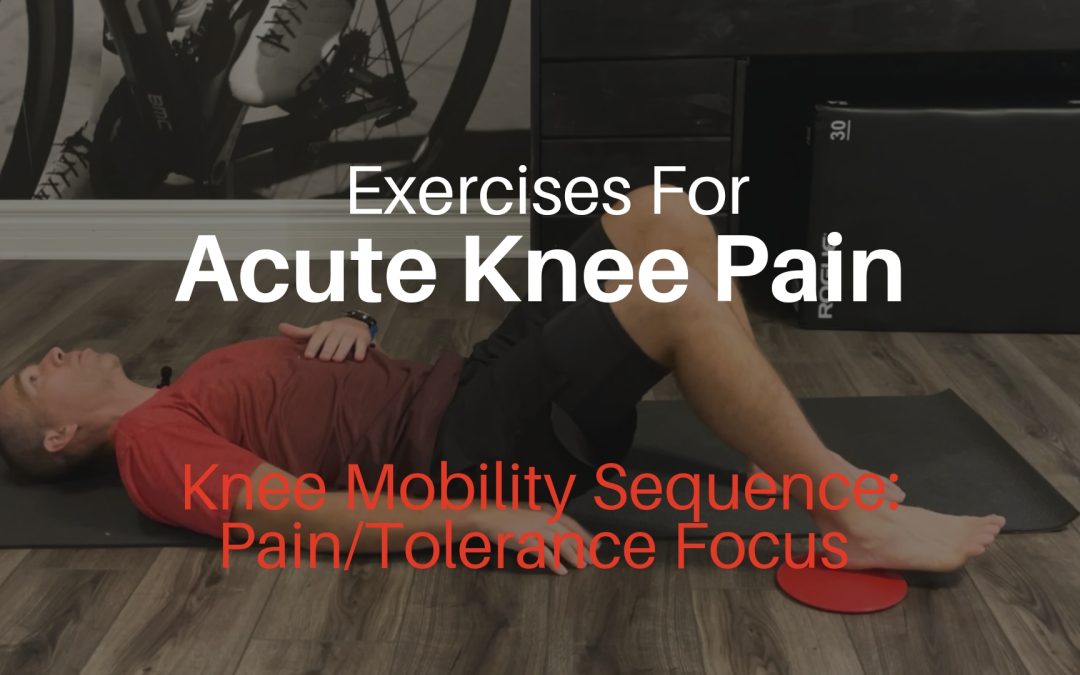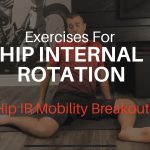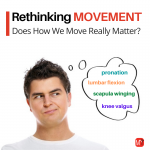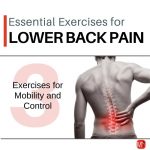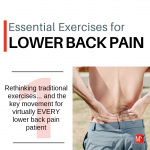In this article we’re going to talk about acute knee pain, or more specifically, how to target an acute or sensitive knee with respect to our exercise prescription.
As we’ve talked about many times in the past, when treating pain and dysfunction, one of the first things we need to do is develop tolerance to basic movements.
Think of it this way… If the knee can’t perform basic motions like flexion, extension, or rotation, the knee is either going to hurt all day, or movement is going to be significantly altered as the brain has to find alternate movement strategies to avoid the painful movements and painful positions.
When dealing with a painful and sensitive knee, the first things we need to do is develop and tolerance to basic movements.
So what I’m going to review in this article is the knee movement/exercise sequence that I use for a painful and sensitive knee.
Exercises For Knee Pain: Here’s What We’ll Cover…
There are 3 key exercises that make up the routine. Why these exercises? Because they encompass the key movements that a knee must be able to do. But they can also be graded for each patient presentation. In other words, the exercises can be tailored to each patient based on their level of pain and movement tolerance.
Then once we’ve covered the specific exercises, I’ll wrap up the article by discussing some key programming and progression criteria.
That’s where we’ll review how many sets and reps the patient or client needs to perform, how often they need to perform the routine, what’s OK and not OK as far as any symptoms they may feel during the exercises, and when we know when it’s time to progress the patient into the next phase of care.
And just as one last FYI, remember, if you are a My Rehab Connection subscriber and you use our exercise prescription software, you can find all of these exercises in our Exercise Library. You can either search for them by name in the Exercise Library itself, or you can find this movement sequence in the Exercise Groups section under the title, Basic Knee Movement Sequence: Pain/Mobility Focus.
Now let’s take a look at the exercises themselves.
The 3 Key Exercises For Knee Pain
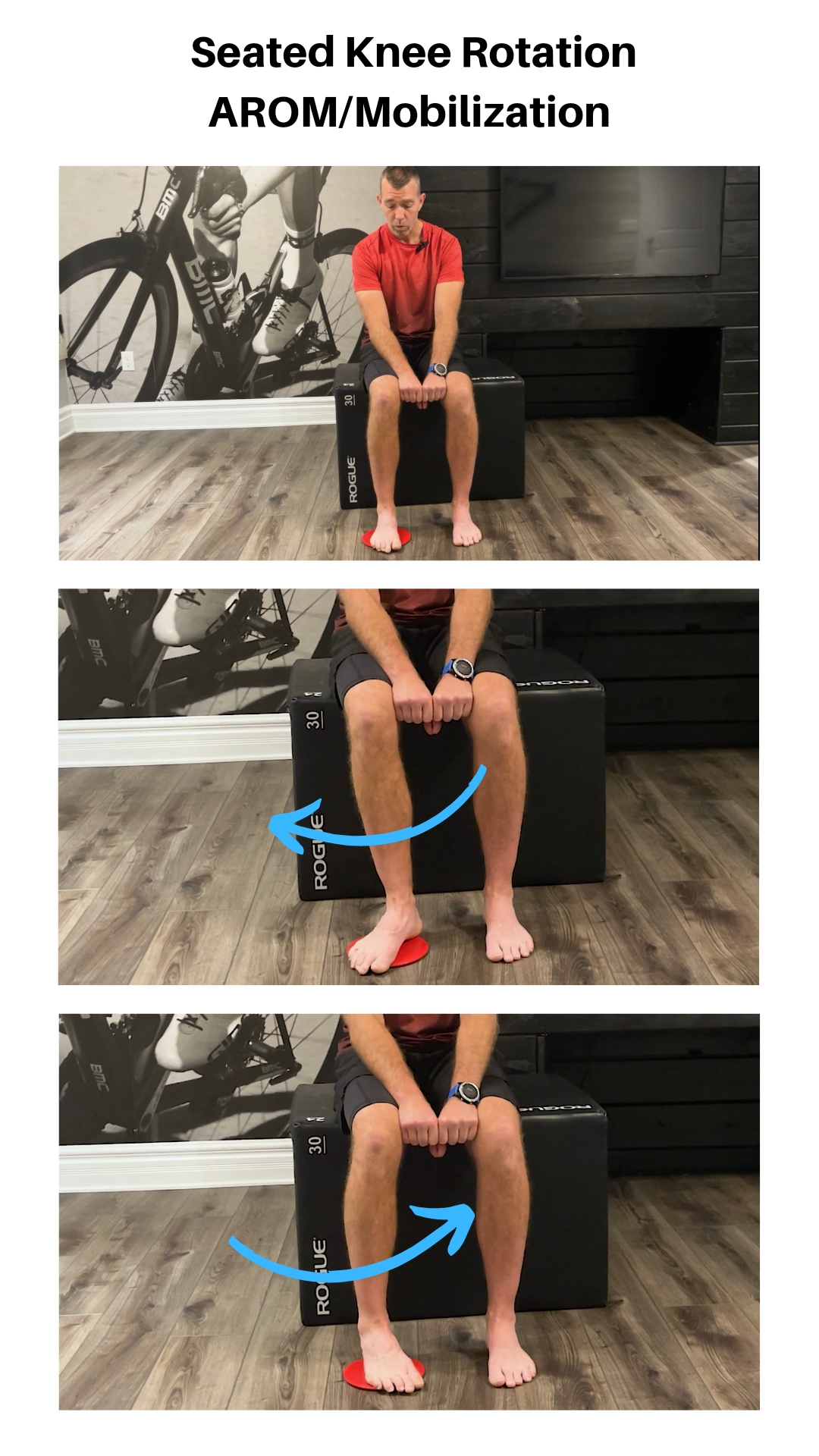
To perform this exercise:
Begin in a seated position with your feet flat on the floor. Place your hands or a yoga block between your knees.
Push your knees in against the block. This pressure will lock your thigh in place to isolate movement at the knee joint.
Hold this inward tension then rotate your foot/lower leg inwards.
This is internal rotation of the knee joint.
NOTE: Move as far as you can, but don’t push into pain. Some mild, achy symptoms are OK, but limit how far you move if needed.
Hold this inward position for 1-2 seconds then rotate your foot/lower leg outwards. This is external rotation of the knee.
NOTE: Move as far as you can, but don’t push into pain. Some mild, achy symptoms are OK, but limit how far you move if needed.
Rotate the knee back and forth 10 times.
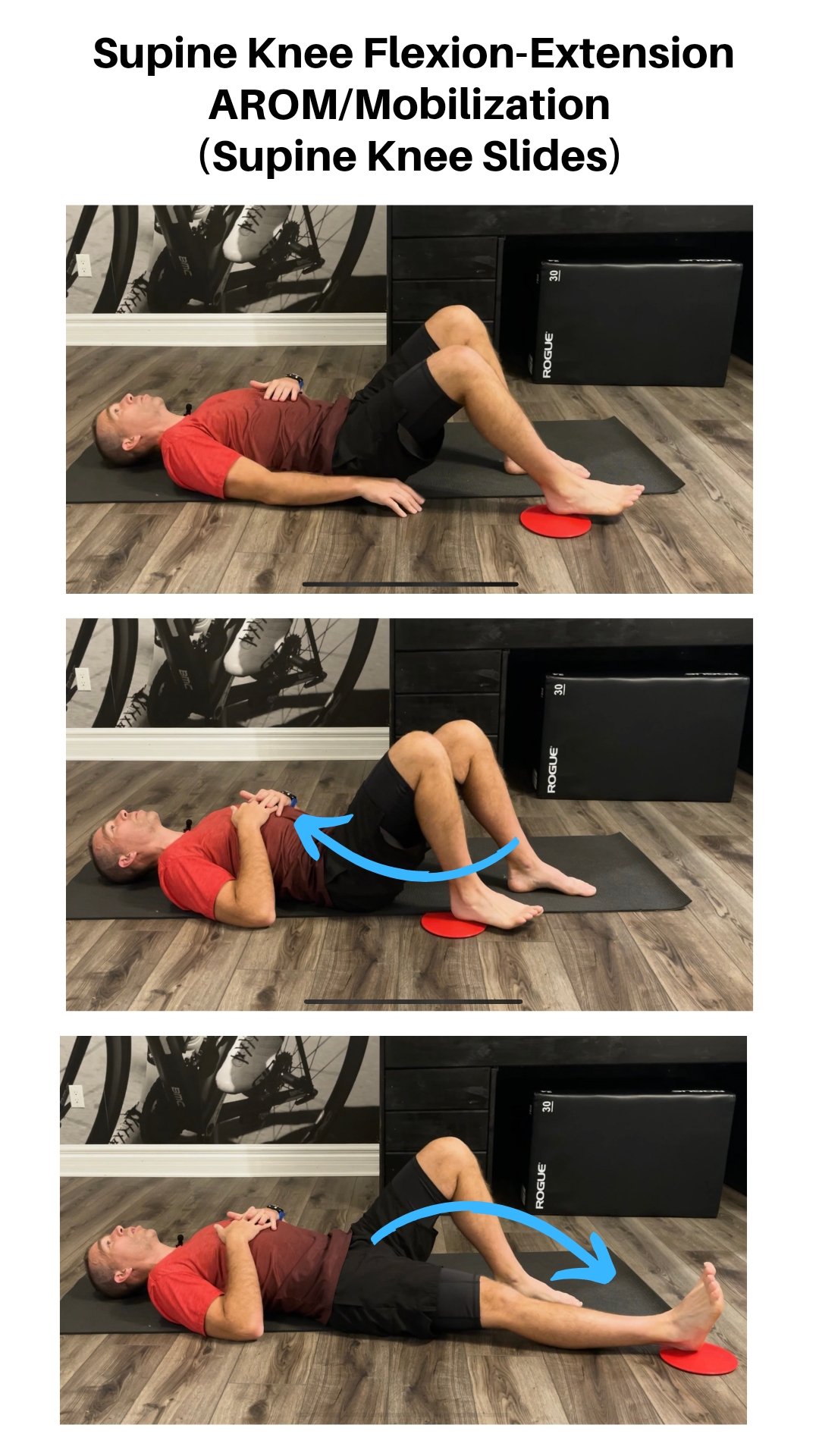
To perform this exercise:
Begin on your back with your knees bend and feet flat on the floor.
Slowly straighten your leg BUT do not lift your foot. Instead SLIDE your foot along the floor. This will put less stress on your knee.
This exercise should be comfortable so do not force your knee to straighten – extend your knee only as far as possible without pushing into pain.
Hold this position for 1-2 seconds the pull your knee back towards you to flex/bend your knee.
Again, do not lift your foot. Instead SLIDE your foot along the floor. Only bend the knee as far as you can without moving into pain.
Perform 10 slow repetitions.
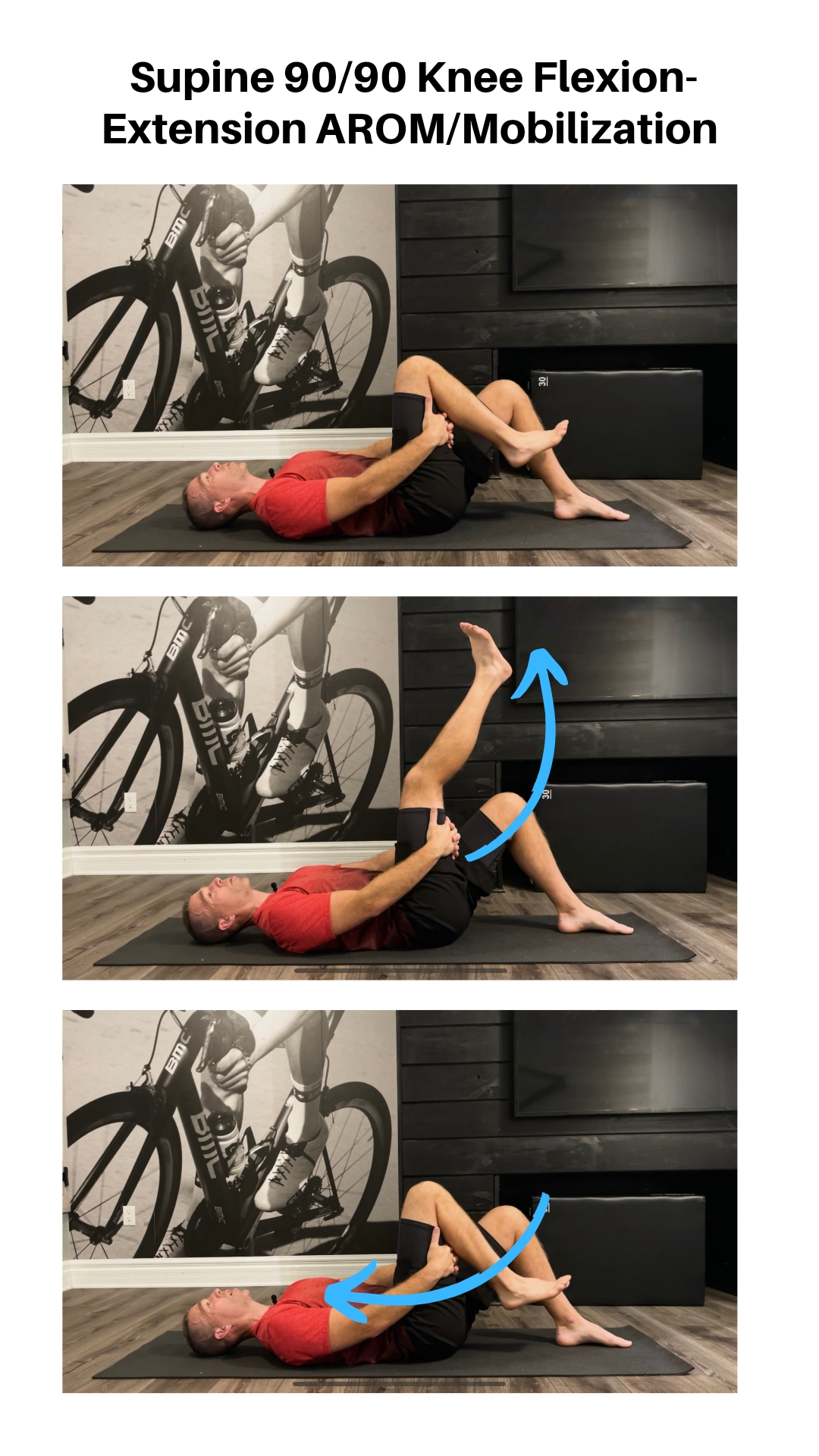
To perform this exercise:
Begin on your back with your knees bend and feet flat on the floor. Use your hands to hold your thigh vertical.
Slowly straighten your leg. Move as far as you can comfortably BUT do not force or push into pain.
Hold this position for 1-2 seconds the pull your knee back towards your hip. to flex/bend your knee. Again, move as far as you can comfortably BUT do not force or push into pain.
Perform 10 slow repetitions.
Programming and Progression Criteria
Now that we’ve gone over the program itself, let’s go over programming and progression criteria
Move To Tolerance
First, the key with these motions is to move to symptom tolerance. In other words, we want the patinet to move as far as possible into each direction, but we don’t want to force the knee into painful positions that it’s not ready for.
We’re trying to strike a balance here. We know movement can be such a powerful way to influence tissue and guide healing so we don’t want to avoid these movements altogether. But but we also don’t want to force the knee into a position that isn’t safe and risk a fllare-up of the condition.
So the basic rule is that some mild achy symptoms are OK, and can even be beneficial to dial down the pain response, but we’ll limit the range that we use to keep the exercises well with symptom tolerance.
Patient Education Matters Here
Remember, many patients will be hesitant or even fearful of moving a painful knee. Especially if some of these movements create or reproduce some symptoms.
So patient education is critical. Here it is helpful to point out to patients that these are all gentle, non-weight bearing exercises.
So any symptoms that they experience—at least if we are keeping the movements to symptom tolerance as we just discussed—will be a result of tissue inflammation or sensitivity as opposed to further tissue damage or injury.
Programming: Sets, Reps, and Frequency
As far as programming, the patient is going to be perform each of these movements for 10 slow, deliberate repetitions. And they’re going to repeat this every few hours.
The idea here is to create a light, easy, controllable stimulus…but to provide this stimulus on a regular basis throughout the day
The other thing to point out here is that while I like all 3 of these movements as a full routine, it doesn’t mean that we have to prescribe all 3 movements at once.
Depending on the patient and how sensitive the knee is, we can start with 1-2 of the movements and then add the other exercises as treatment progresses and their tolerance and their confidence and trust in their movements improve
Progression Criteria
Finally, let’s talk about progression criteria. Remember, the big picture here, which is to build and restore the tolerance to these basic, fundamental knee motions and position.
Here we’re looking for the point when the motion is no longer limited by symptoms and the patient is able to tolerate (and even push and contract into) these end range positions. And just to clarify, this doesn’t necessarily mean the motion has to be completely symptom free.
For example if the patient has some very mild sx but these symptoms are tolerable and do not limit the actual knee ROM, we can then progress the exercises. Here that would typically mean transitioning the exercises from a pain/tolerance focus to concentrate more on knee mobility and control.

